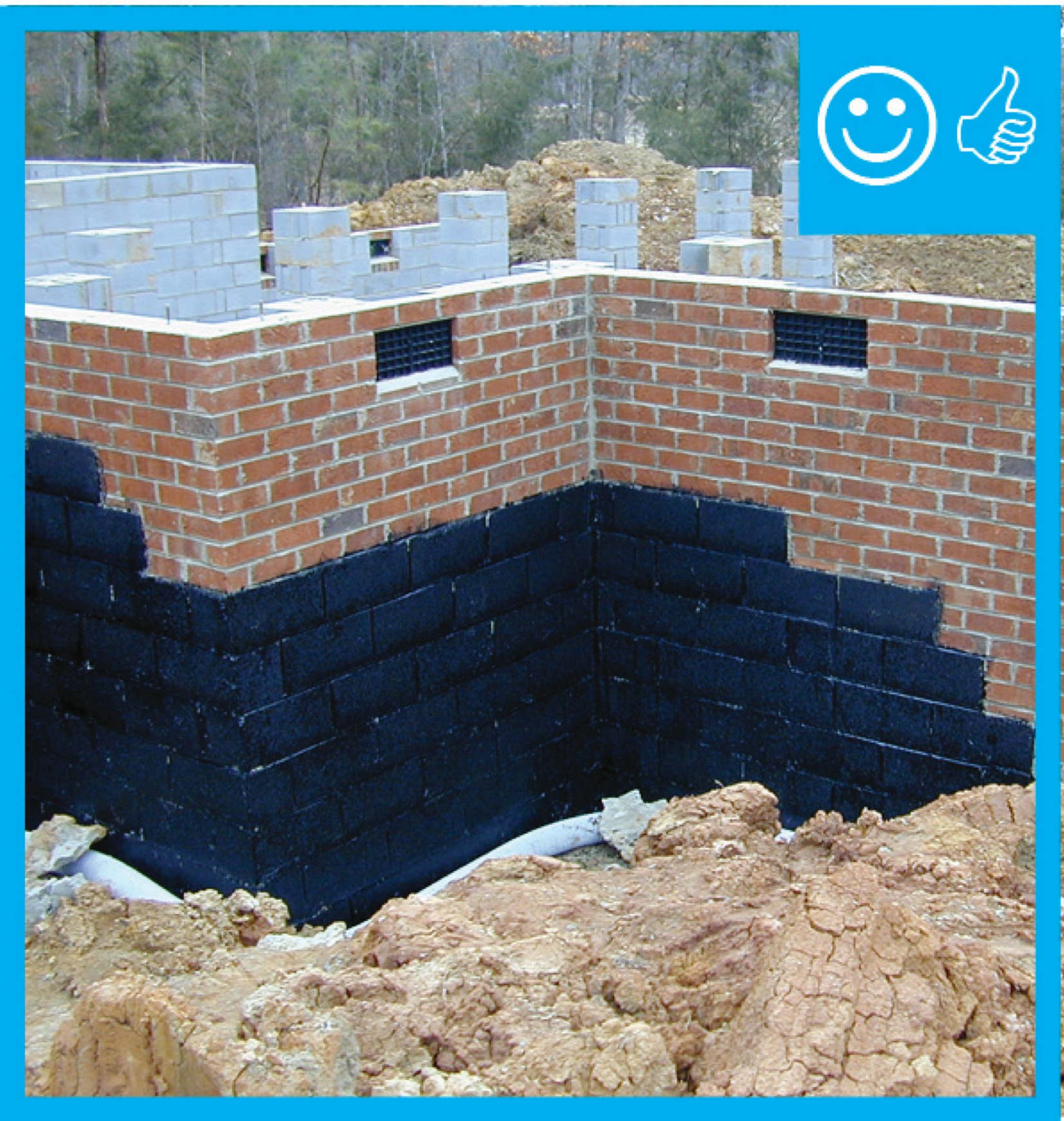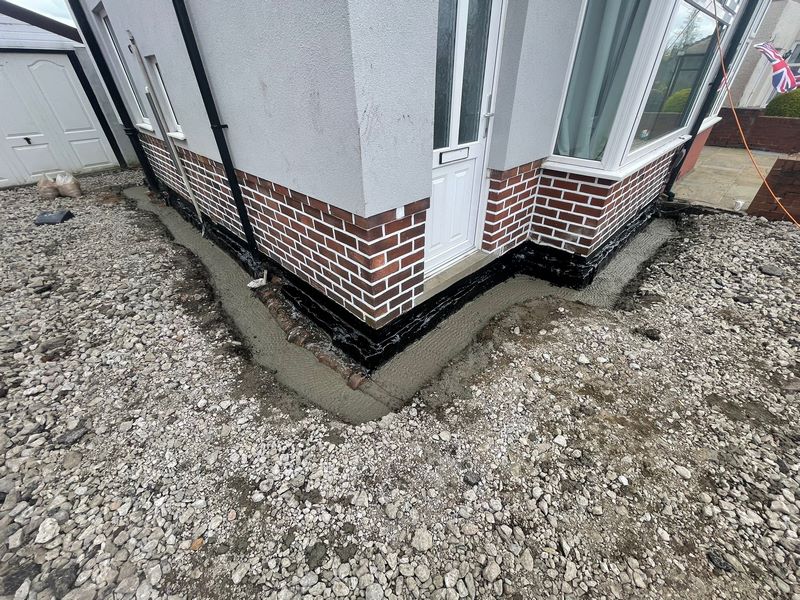Discovering the Numerous Techniques and Solutions for Effective Damp Proofing
Wetness in structures postures substantial obstacles to both structural stability and indoor air top quality. Various strategies and options have actually arised to battle this prevalent issue. From traditional damp-proof membranes to ingenious chemical therapies, each approach provides special advantages. Comprehending these alternatives is important for reliable wetness control. Choosing the appropriate service depends on certain building problems and requirements, motivating additional expedition right into the most efficient moist proofing methods readily available.
Understanding the Sources Of Wetness
Dampness can develop from various resources, comprehending these reasons is important for reliable remediation. Frequently, moisture originates from three key resources: rising damp, penetrating wet, and condensation. Rising wet happens when groundwater travels up-wards via porous products, such as block or stone, typically due to an absence of an effective obstacle (damp proofing newcastle). Permeating moist is usually caused by external variables, including roof covering leakages, malfunctioning seamless gutters, or harmed walls, permitting water to infiltrate a residential property. Condensation, on the other hand, results from excess wetness in the air, typically aggravated by bad air flow and temperature differences, leading to water droplets creating on surfaces. Determining these underlying problems is crucial, as each kind of dampness requires a customized technique for remediation. Appropriate assessment helps in establishing one of the most effective options, ultimately guarding the architectural stability of a structure and boosting indoor air top quality
Typical Damp-Proof Membranes

Chemical Damp-Proofing Solutions
Chemical damp-proofing options use an ingenious approach to stop wetness breach in structures. These methods typically include the application of liquid chemicals that pass through stonework and develop a barrier versus increasing wet. Frequently made use of chemicals consist of silanes, siloxanes, and various other water-repellent agents that react with surface products to create a hydrophobic layer.The application process generally calls for exploration holes into the wall surfaces, injecting the chemical option, and permitting it to treat. This approach is specifically useful for older structures where standard damp-proof membranes might be impractical. Additionally, chemical damp-proofing can be much less turbulent and a lot more cost-efficient than comprehensive restoration projects.While reliable, these remedies depend upon proper application and environmental conditions for peak efficiency. Regular maintenance and surveillance are vital to assure the durability of the damp-proofing treatment. Generally, chemical damp-proofing stands for a functional option for protecting structures against moisture-related damages
Tooth Cavity Wall Construction Techniques
Dental caries wall building techniques use countless benefits, especially in dampness control and energy effectiveness. By incorporating an air space between two layers of stonework, these wall surfaces properly mitigate water access while improving insulation. This mix not only secures structures from wetness yet also contributes to minimized power usage.
Benefits of Dental Caries Wall Surfaces
When thinking about reliable damp proofing methods, the advantages of tooth cavity wall surfaces stand out prominently. Cavity wall surfaces contain two separate layers, producing an air space that effectively minimizes dampness penetration. This layout decreases the threat of dampness, as the outer wall surface acts as an obstacle against rain and water access. Furthermore, tooth cavity wall surfaces enhance thermal insulation, which adds to energy effectiveness by reducing warmth loss. They also provide audio insulation, helping to develop a quieter interior setting. The air space permits for ventilation, which helps in wetness control and minimizes the possibility of mold and mildew growth. These benefits not only enhance the general convenience of a structure but additionally add to its long life and architectural integrity.
Wetness Control Approaches
Efficient dampness control strategies are vital in tooth cavity wall surface building to guarantee long-term defense versus wetness. One main technique entails the unification of weep openings, which help with water drainage from the cavity, stopping build-up. In addition, using breathable membranes can aid manage dampness levels while enabling caught vapor to run away. Appropriate placement of insulation is additionally vital, as it needs to not obstruct water drainage paths. Guaranteeing that the outer fallen leaves of the cavity wall are created with water-resistant products boosts general longevity. Regular maintenance checks are necessary to identify any kind of blockages or damages early, guarding the framework's stability. Eventually, a combination of these strategies forms a durable protection against moisture invasion in cavity wall surfaces.
Insulation and Energy Effectiveness
Insulation plays an important function in enhancing power effectiveness within cavity wall surface building. By integrating protecting materials, these wall surfaces produce a thermal barrier that minimizes warmth loss and decreases power intake. Effective insulation not only assists preserve a steady interior temperature level yet additionally alleviates the risk of wetness, as it stops condensation within the wall surface cavity. Various strategies, such as making use of stiff foam boards or mineral wool, can be used to accomplish excellent insulation efficiency. Additionally, proper installment is important to guarantee that voids and spaces are minimized, which can or else jeopardize energy performance. Inevitably, a well-insulated cavity wall contributes substantially to overall sustainability and lowers heating & cooling prices for homeowners.
Outside Damp Proofing Approaches
External wet proofing techniques are necessary for protecting structures from moisture infiltration. 2 efficient strategies consist of the application of waterproof membranes and the setup of French drains pipes. These remedies assist minimize water accumulation and maintain the honesty of structures.
Waterproof Membrane Layer Application
While different techniques exist for stopping dampness ingress, the application of waterproof membrane layers remains an extremely reliable external moist proofing strategy. These membranes are typically made from products such as polyethylene, rubber, or modified bitumen, providing a robust obstacle versus water penetration. The setup process includes using the membrane to the exterior surface areas of structures or wall surfaces, making certain full insurance coverage to avoid leakages. Appropriate adhesion and securing at joints are crucial to making the most of effectiveness. Waterproof membrane layers can be used in numerous forms, consisting of fluid finishings and sheet membranes, permitting adaptability based upon the specific needs of the structure. This approach not just shields buildings from wetness however also improves their durability and architectural integrity.
French Drainpipe Installation
One effective technique for taking care of groundwater and stopping you can find out more dampness build-up around a building's structure is the installment of a French drain. This water drainage system is composed of a trench loaded with crushed rock and a perforated pipe that redirects surface area water far from the structure. Correct installment calls for mindful planning, making certain that the drainpipe slopes away from the framework to promote perfect water circulation. In addition, the location of the drainpipe is crucial; it should be positioned in areas vulnerable to merging or excess dampness. Routine maintenance, including clearing particles from the crushed rock and making sure the pipe continues to be unhampered, is crucial for long-lasting efficiency. Eventually, a well-installed French drainpipe can significantly reduce the danger of water-related concerns in foundations and basements.
Interior Waterproofing Techniques
Interior waterproofing techniques are essential for safeguarding a building's interior from dampness infiltration and potential water damage. These techniques typically include the application of specialized products and techniques developed to create a dampness barrier within the framework. One common approach is making use of water-proof layers or sealants on wall surfaces and floorings, which prevent dampness from penetrating surfaces.Additionally, mounting indoor water drainage systems, such as sump pumps, can effectively handle water build-up in basements and crawl spaces. An additional method entails the use of vapor barriers, which are installed to inhibit wetness motion from the ground right into living spaces.Moreover, addressing any splits or spaces in walls or foundations with proper sealers ensures a complete defense against water breach. By applying these indoor waterproofing strategies, home proprietors can greatly minimize the danger of mold development, structural damages, and other moisture-related issues. Appropriate implementation of you can find out more these strategies is important for lasting defense and structure honesty.
Regular Maintenance and Assessment Practices
Normal maintenance and inspection methods are crucial for ensuring the long-lasting performance of damp proofing options in any kind of building. Regular checks make it possible for homeowner to identify early indications of wetness invasion, such as peeling paint, mold growth, and stuffy smells. These indicators can indicate underlying issues that require instant attention.Inspections need to be conducted at the very least yearly, concentrating on vulnerable locations like basements, creep areas, and exterior wall surfaces. During these evaluations, property proprietors must analyze sealers, water drainage systems, and air flow to confirm they work correctly.Additionally, keeping seamless gutters and downspouts is necessary, as stopped up systems can cause water buildup near the foundation. Carrying out a regular maintenance routine, in addition to prompt repair services, can significantly prolong the life-span of damp proofing actions and shield the structural stability of the structure. Proactive steps eventually add to the general health and wellness of the living environment.
Often Asked Concerns
How Much Time Does Damp Proofing Generally Last?
The duration of damp proofing efficiency varies, typically lasting between 20 to 50 years. Elements such as application quality, ecological problems, and upkeep techniques substantially affect the longevity of the damp proofing therapy.

Can I Damp Proof My Home Myself?
The specific contemplated the feasibility of do it yourself damp proofing. With proper research study and the ideal products, it is feasible. Nonetheless, they additionally acknowledged the relevance of professional guidance to ensure lasting effectiveness and avoid future problems.
What Are the Indicators of Inadequate Damp Proofing?
Indicators of inadequate damp proofing consist of relentless mildewy smells, noticeable mold and mildew development, peeling paint, damp spots on wall surfaces, and timber degeneration - damp removal newcastle. House owners should resolve these concerns promptly to stop additional damage and health and wellness problems
Does Damp Proofing Affect Indoor Air High Quality?

Just How Much Does Specialist Damp Proofing Expense?
Expert moist proofing prices differ significantly, commonly ranging from $1,000 get redirected here to $5,000 depending on the home's dimension, the degree of the wet issue, and picked methods. Each situation needs a customized evaluation for exact prices. Commonly, wetness originates from three main resources: increasing wet, permeating damp, and condensation. When thinking about effective damp proofing techniques, the advantages of tooth cavity wall surfaces stand out prominently. Outside wet proofing techniques are crucial for protecting structures from moisture infiltration. While numerous approaches exist for avoiding wetness ingress, the application of water-proof membrane layers continues to be a highly reliable outside damp proofing strategy. Indicators of inefficient wet proofing consist of relentless musty odors, visible mold and mildew growth, peeling paint, moist patches on wall surfaces, and wood degeneration.